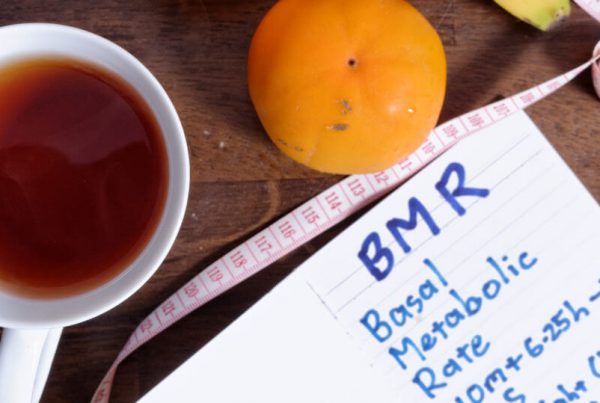How do you track your progress?
Do you keep a log of your maximum lifts and try to set personal records every day at the gym?
Every time you go out to run, do you try to run further than the run before? Do you try to run longer?
Do you weigh yourself every week, or every day? Or is your appearance in the mirror the final judge as to how much progress you’re making?
People work out for many reasons, and so there are many ways to track progress. Tracking your progress is a very good idea. It helps you stay motivated and keeps you focused on achieving your goals. However, not all methods of tracking are created equal, and some of them are just plain bad (weighing yourself every day is a terrible idea).
No matter what your goals are in the gym or with your fitness – whether it’s gaining muscle and becoming stronger, getting toned, or simply losing fat – tracking your progress by using your body composition data is one of the best ways to get results. This means tracking your changes in:
- Body Fat Percentage
- Lean Body Mass
- Body Fat Mass
- Skeletal Muscle Mass
While almost any type of tracking can help you reach fitness goals faster, tracking the changes in your body composition allows you to do some unique things in your training that you can only do with a breakdown of your body composition.
For example…
Tracking Changes in Body Composition Lets You Turn Your “I Wants” Into Actual Goals
It’s so much easier to get results when you set goals, and it’s even easier if you set defined, numerical goals based on your body composition.
What’s meant by defined, numerical goals? Something clear, not something vague like:
- “I want to get bigger”
- “I want to lose weight.”
These aren’t goals: these are desires. They express an interest in a general, overall change in body size or shape that doesn’t allow you to measure your progress in any defined, objective way.
How are you going to assess if you get “bigger”? You can eat 4,000 calories a day and get “bigger.” You want to lose weight? You can certainly do that by cutting calories, but did you know you can also lose weight due to muscle loss? You don’t want that.
So instead, let’s take these desires and turn them into goals.
“I want to gain 10 pounds of muscle”
![]()
Why this is better: It’s safe to assume that in most circumstances, when people want to get “bigger”, they want their muscles to get bigger, not their waistlines. By defining your goal as being Lean Body Mass gain (muscle is the biggest component of Lean Body Mass) and putting a number to it, you have a numerical goal to work towards.
“I want to lose 10 pounds of fat”
![]()
Why this is better: Similar to getting bigger, when people say they want to lose “weight”, it’s safe to assume that they really want to lose fat. You don’t want to lose muscle – muscle is metabolically active tissue that serves many important roles: from maintaining your metabolism to supporting healthy bone density to keeping a healthy immune system.
It’s likely that some muscle loss will occur when you try to lose fat, so by monitoring the changes in your body composition, you’ll be able to keep an eye on this and minimize any losses that may occur by making the necessary corrections in your diet and exercise program.
Tracking Changes In Your Body Composition Lets You Set Reachable Time-Based Goals
Sometimes, you start a fitness journey because you have a special event coming up. Maybe you’re going on a vacation and you want to have a rockin’ body when you hit the beach. Maybe there’s a wedding coming up, and you want to make sure you fit into a new/favorite dress.
Point is: there’s a deadline you want results by, and you want a solution that will help you get there. This is a really common situation, so common that nearly every fad diet or gimmicky product makes time deadlines a critical part of their marketing. These diets and products all claim to solve an immediate problem, which makes people feel better, and which is why popular magazines just love promoting them (looking at you, Cosmopolitan).
There are no shortcuts to losing weight, gaining muscle in a very short amount of time. But instead, by tracking your progress by tracking your changes in body composition, you can actually set real goals with real results that you can actually achieve.
Let’s build on the goals we made before, this time adding a reasonable time frame.

“I want to build 10 pounds of muscle in 5-6 months”
When you try to build develop muscle and Lean Body Mass, there are a lot of factors that go into whether or not you achieve that goal. What type of exercises you do, the degree to which you properly perform your exercises, whether you lift heavy with few reps or light with many, how often you strength train, how often you rest…the list goes on, and that doesn’t even include proper nutrition.
However, assuming that you do everything perfect and you’re a beginner, experts posit that you can gain roughly 2 pounds of muscle a month with consistent, proper training. If you’re not a beginner, your rate of lean mass growth will be slower as you get closer to your genetic limit for natural muscle development.
Knowing this, if you’re just getting started, you can track your progress every month and expect to see around a 2-pound increase every month until you reach your goal of 10 pounds of muscle by following a challenging lifting program.
Here’s what this can look like over 5 months:
When you use your body composition to track your progress, it suddenly doesn’t matter as much how much you can lift, or how many reps you can do. Instead, what matters is that you’re working towards a physical goal – getting bigger and more muscular – and you’re doing it in a way that you can reliably track towards a realistic goal.
“I want to lose 10 pounds of fat in 10-12 weeks”
In some ways, losing Fat Mass is easier than building Lean Body Mass and muscle. There are many types of exercise that encourage Lean Body Mass development, many workout plans to organize them in, and it requires significant amounts of rest and recovery. Fat loss, on the other hand, requires less arguably less planning and actually occurs faster than muscle gain.
To lose Fat Mass, you need to be in a caloric deficit (taking in less calories than you use) and maintain it carefully over an extended period of time. This isn’t rocket science, and virtually every peer-reviewed study that includes groups that undergo a caloric deficit experience fat loss. Here are three published in 2015 alone. Hypocaloric diets work.
How quickly can you lost fat? Many studies and health groups, including the Centers for Disease Control, report that by reducing your caloric intake by 3,500 calories a week typically results in a pound of fat loss.
Here’s what that can look like over 12 weeks:
Note: a pound of fat loss, not weight loss. If you’re just a scale to measure your rate of change, you may experience even more “weight loss,” but if you’re on a hypocaloric diet, especially one that focuses on cutting out carbohydrates, you might experience additional water weight loss.
That’s because water bonds to glycogen at rate of about 4 grams of water: 1 gram of carbs. If you’re much lower on carbs than you usually are, you’ll be retaining less water and weigh less accordingly.
When you use your body composition to track your progress with fat loss, you can account for what’s actually being lost when you see your weight decrease on the scale. This helps you avoid mistaking your weight loss for water weight loss or (hopefully not) muscle loss.
Why is this important to know? If you’re tracking your body composition changes instead of simple scale weight changes, you won’t be confused when you gain a few pounds back after reintroducing carbs into your diet. You’ll know that this weight is water, not fat.
Also, by being patient and tracking a pound or two of fat loss each month, you can stay motivated by knowing you’re making real changes that will last in your body. Gaining water weight is as easy as refueling on carbs, but gaining actual fat? That requires you to be in a caloric surplus over a period of time. Eat within your Total Daily Energy Expenditure, and you can expect your fat mass to remain stable.
Tracking Changes In Your Body Composition Helps You Reduce Negative Changes In Your Body
Unfortunately, the truth is that “positive” results– increases in muscle and decreases in fat – usually come paired with negative consequences.
- Gaining Fat With Muscle
If the results you’re working for are muscle gain, you may end up experiencing some unwanted fat gain as a side effect. This is due to the nature of the diet you should go on to encourage muscle tissue growth: namely, a caloric surplus.
Getting sufficient nutrients/calories – particularly carbohydrates and protein – is essential for encouraging increased muscle and strength. However, just as eating fewer calories than you use causes a decrease in fat, eating more than your body “needs” will cause a gain in fat over time.
For some people, gaining a little extra fat is not a big concern, but for others it is – especially if clothes start to not fit properly. By tracking your body composition changes, you’ll be able to track both muscle and fat gain, allowing you to change your diet or exercise routine if you feel that you’re gaining too much fat.
- Losing Muscle With Fat
The opposite is true when you try to lose fat. With large reductions in fat due to a hypocaloric diet, you can lose Lean Body Mass and Skeletal Muscle Mass. Muscle is healthy tissue that you should work hard to preserve.
Fortunately, you can minimize the loss of muscle while reducing fat mass by increasing your protein intake and by performing resistance training. In a study of overweight police officers, the group that ingested casein protein supplements and performed regular resistance training experienced less loss of muscle tissue and increased strength vs. the group that simply dieted.
By tracking your body composition changes, you’ll be able to keep an eye on any losses in muscle development. Just like for people who want to build muscle, if you see that your negative change – loss in muscle – is becoming too great when you track your body composition changes, you can made the necessary adjustments to your diet and workout plan to help mitigate that loss.
Tracking Progress and Setting Reachable Goals Leads to Success
![]()
Tracking your progress over time is one of the most important things you can do to ensure your reach your health and fitness goals. Whether that’s gaining muscle, losing fat, or both, by accurately tracking your progress with something measurable instead of something visual – like a mirror – or unreliable – like scale weight – you will be able to reach your goals faster.
That’s why tracking progress with your body composition delivers results: it offers objective, measurable values in your body that translate into physical results.
With more muscle and less fat, you’ll be stronger, look fitter, and will be healthier. You’ll be able to gauge this progress objectively instead of guessing, and you’ll be able to make smart adjustments in your training as needs be.
Doesn’t that sound nice?






